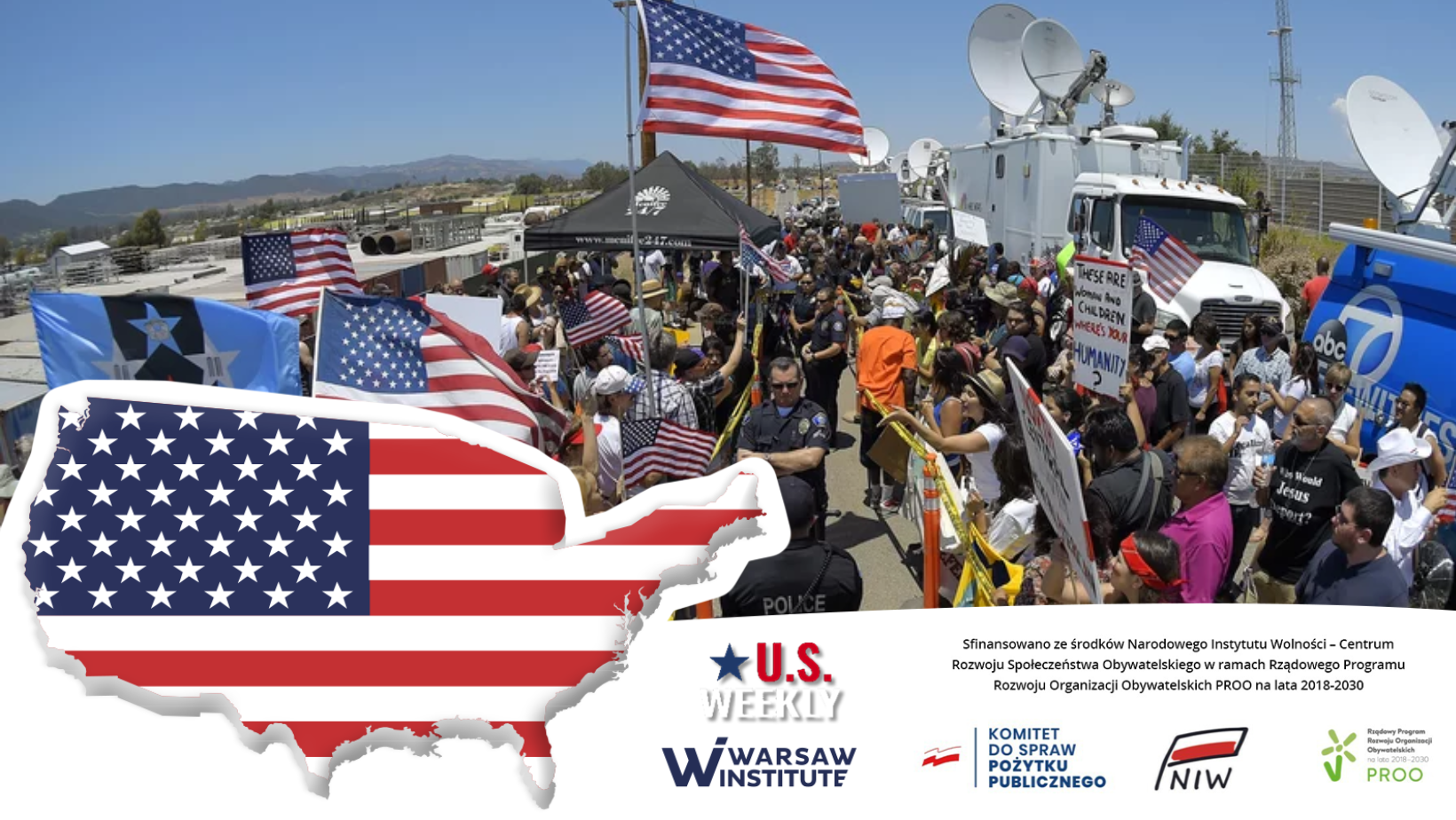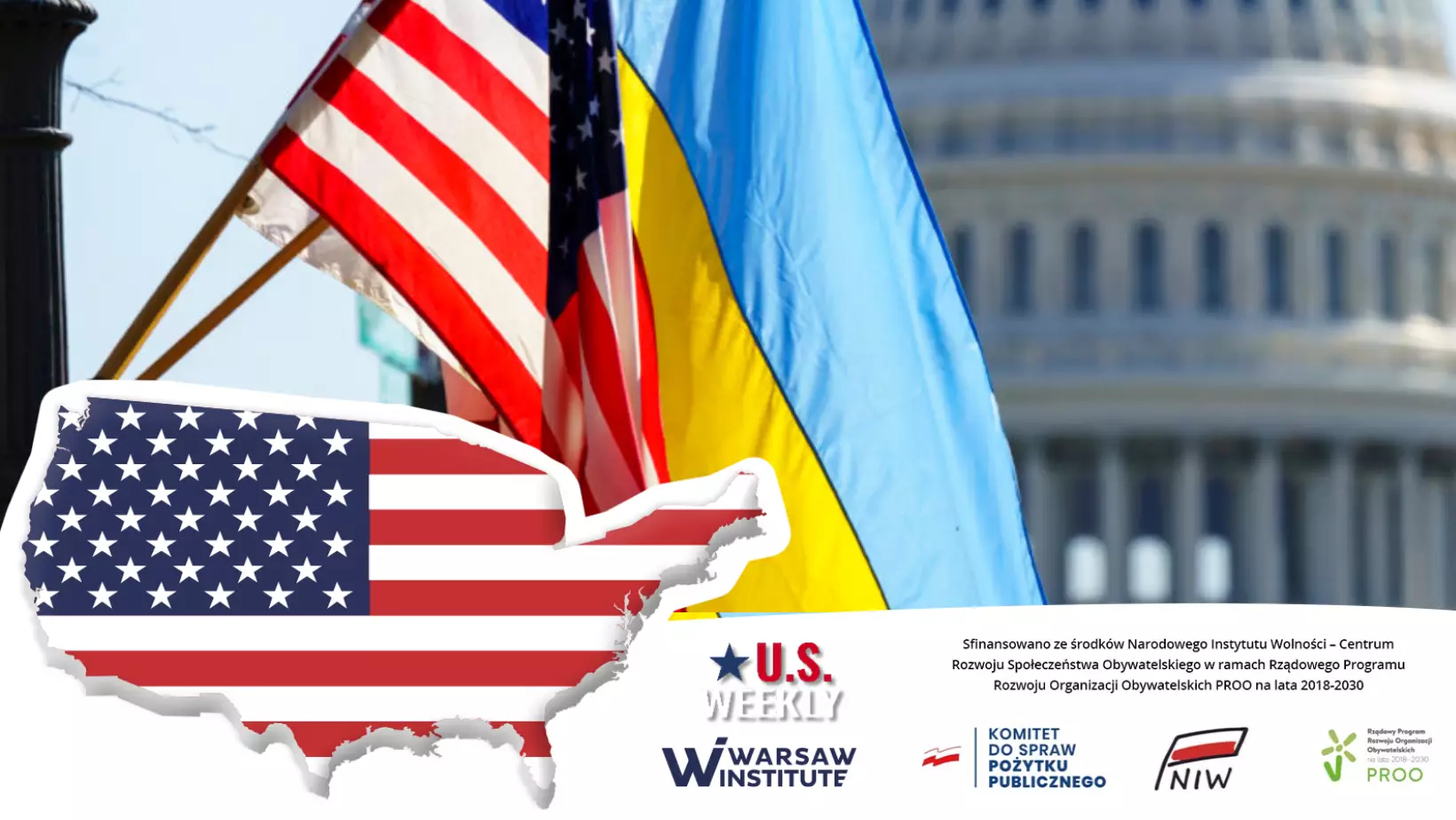
U.S. WEEKLY offers an in-depth analysis of various geopolitical processes that have direct effect on US’ domestic and foreign policies. This particular analytical column is possible thanks to the cooperation with polish media abroad: Dziennik Związkowy – Polish Daily News, Polishexpress of United Kingdom and WIrlandii.pl of Ireland
Date: 16 October 2023
The U.S. Immigration Crisis Dominates a Domestic Political Debate
In recent months, rapidly growing numbers of migrant has become one of the major topics of the U.S. domestic public debate. The problem is particularly acute in so-called sanctuary cities, among which New York City, Chicago and Los Angeles stand out. The upcoming national election in 2024 and the rise of public concern indicate the slow shift in the democratic approach towards immigrants.

According to the 2021 U.S. Census Bureau in the U.S. resided around 45 million immigrants -out of 332 million U.S. civilians- which composed 13.6 percent of the U.S. population. Together with their U.S.-born children, immigrants make up about 27 percent of U.S. inhabitants. The 2022 Current Population Survey, and the Census Bureau have predicted that the total number of immigrants in the United States will reach 65 million by 2050. When it comes to the nationalities in 2021, Mexico as the most common country of origin constituted for 24 percent of the total immigrants, following India (6 percent), China (5 percent), and the Philippines (4 percent).
Currently heaviest burden bear on so-called U.S. Sanctuaries Cities, as in which New York City stands out. New York City is estimated to be home to 3.1 million immigrants, who make up approximately 37% of the city’s population and 45% of our workforce. Mayor Eric Adams announced that the humanitarian crisis would cost the city about $12 billion over three years. He also declared a state of emergency and travelled to Washington asking for more funds and for expedited. Moreover, the Mayor blamed President Biden for failing the city by not doing more. What’s even more, the situation is further complicated by the policies of the republican states, which openly criticise the migrant policy of so-called sanctuary cities. Governor Greg Abbott revealed that recently Texas has bused more than 35,000 migrants to sanctuary cities, including over 13,000 to New York City.
The blame on the Biden administration led President Joe Biden to reverse part of its previous political decisions. On Thursday, 05th of October, Biden’s administration decided to waive 26 federal laws in South Texas to allow for roughly 20 miles of additional border wall construction. Joe Biden also admitted that he had no choice but to use the Trump-era funding for the barrier to stop illegal migration from Mexico. In contrast, when he was asked whether the wall worked, he said flatly, “No.”.
The ongoing crises act as a political fuel for former U.S. President Donald Trump. According to recent polls, former President Trump looks like the favourite to win the 2024 Republican presidential nomination. Recently Trump unveiled immigration plan for 2025. As Boundless indicates, the immigration plan “focuses heavily on the southern border, with several inflammatory proposals that could increase political tensions with Mexico”. The proposal assumes e.x. Naval blockade by the Coast Guard and U.S., labelling drug cartels as “unlawful enemy combatants,” allowing U.S. military intervention in Mexico, an extension of Texas border barriers, and reversing previous asylum restrictions.
The U.S. domestic migration crises also affect Mexico, which has seen a massive increase in migration flow through Mexican territory -from Latin America- in recent years. In addition, relations between the countries are further exacerbated by the fentanyl crisis. The advancing migratory wave may also be compounded by the immigrant anxiety associated with Trump’s potential election victory in 2024.
Author:
Szymon Polewka is a student of international relations at the Jagiellonian University in Kraków, specializing in the history of international relations, the Eurasian region, DACHL countries, intercultural relations, and the energy sector. He is currently on a scholarship at the University of Bremen. He has gained experience organizing the 2020 Economic Forum in Karpacz and numerous youth and student associations, such as AIESEC or Koło Naukowe Wyzwań Zielonego Ładu.
Sources:
1. A Sanctuary City, Yang for New York https://www.yangforny.com/policies/a-sanctuary-city
2. Claire Klobucista, Amelia Cheatham, Diana Roy, The U.S. Immigration Debate, Council on Foreign Relations, Jun. 6, 2023 https://www.cfr.org/backgrounder/us-immigration-debate-0
3. Hurubie Meko, What to Know About the Migrant Crisis in New York City, The New York Times, Sept. 28, 2023 https://www.nytimes.com/article/nyc-migrant-crisis-explained.html
4. Michael D. Shear, How Biden’s Promises to Reverse Trump’s Immigration Policies Crumbled, The New York Times, Oct. 6, 2023 https://www.nytimes.com/2023/10/06/us/politics/biden-trump-immigration.html
5. Trump Releases Hardline Immigration Plan Ahead of 2024 Election, Boundless, Aug 21, 2023 https://www.boundless.com/blog/trump-immigration-plan-2024-election/
6. Victor Nava, 35,000 migrants have been bused from Texas to sanctuary cities — including over 13K to NYC: Abbott, New York Post, Sep. 6, 2023 https://nypost.com/2023/09/06/texas-gov-greg-abbot-says-the-state-has-bused-35k-migrants-to-sanctuary-cities/
7. Will Freeman, Why New York Is Experiencing a Migrant Crisis, Council on Foreign Relations, Oct. 5, 2023
https://www.cfr.org/article/why-new-york-experiencing-migrant-crisis
Support Us
If content prepared by Warsaw Institute team is useful for you, please support our actions. Donations from private persons are necessary for the continuation of our mission.
All texts published by the Warsaw Institute Foundation may be disseminated on the condition that their origin is credited. Images may not be used without permission.

















